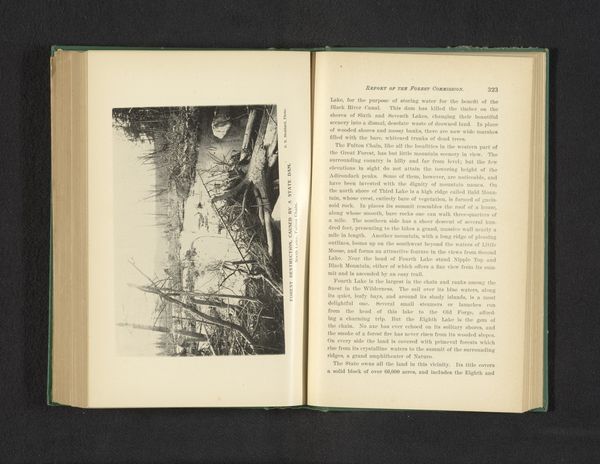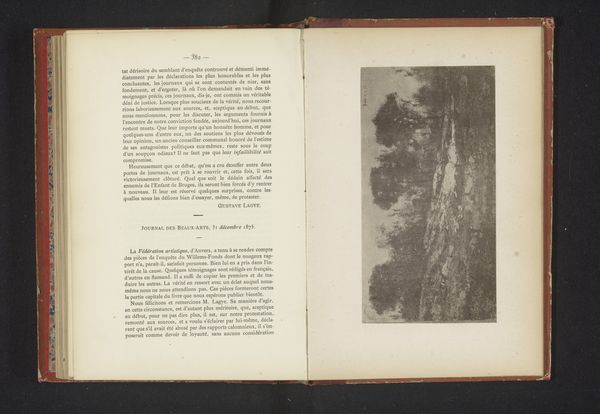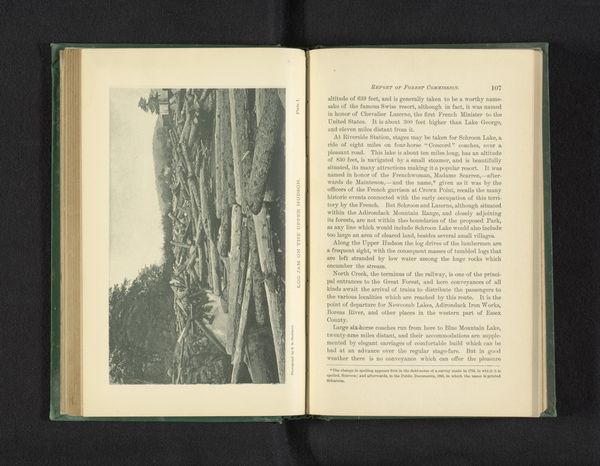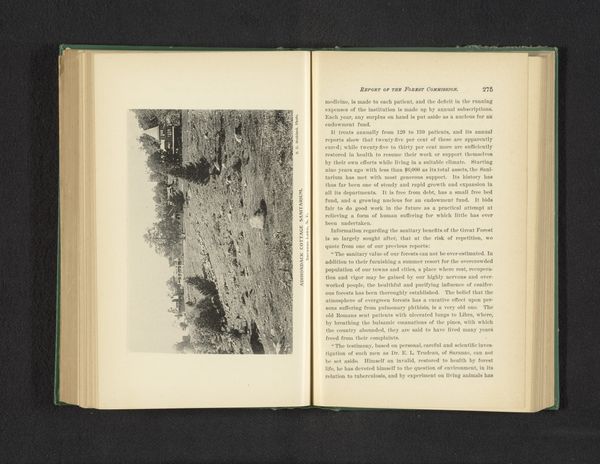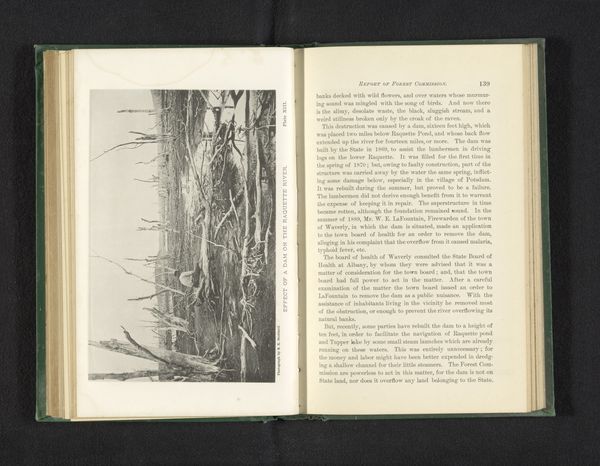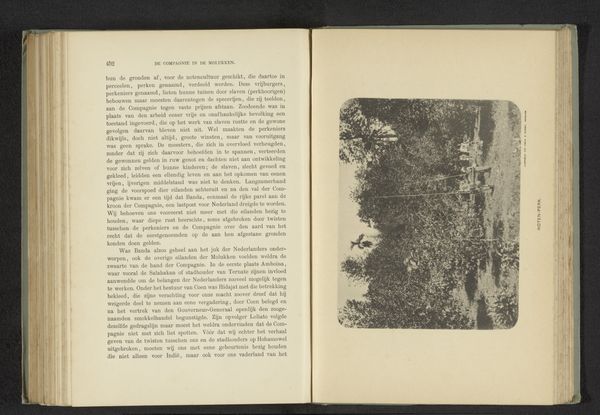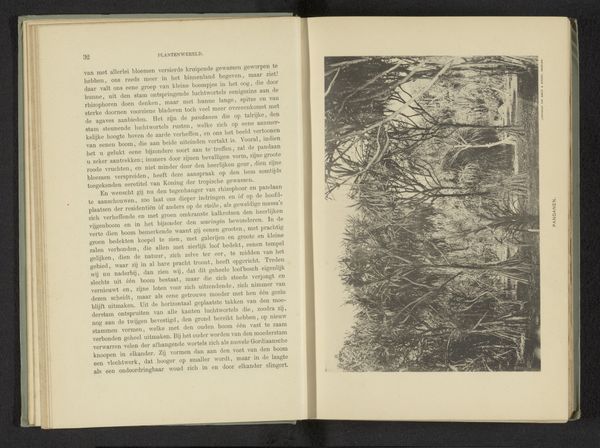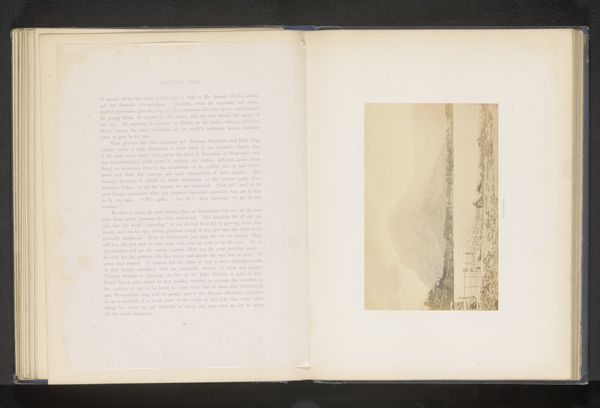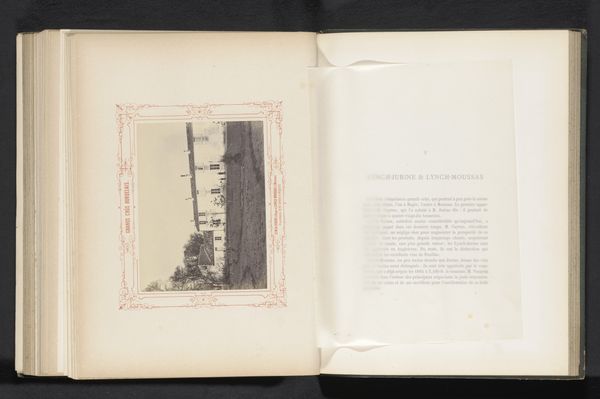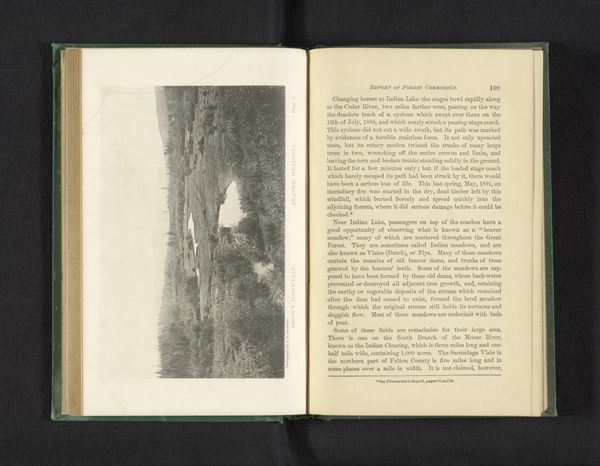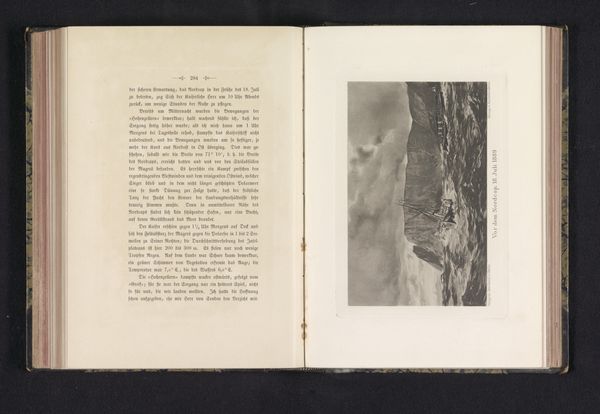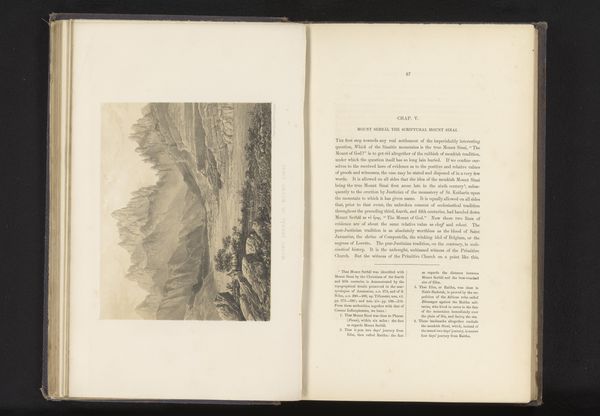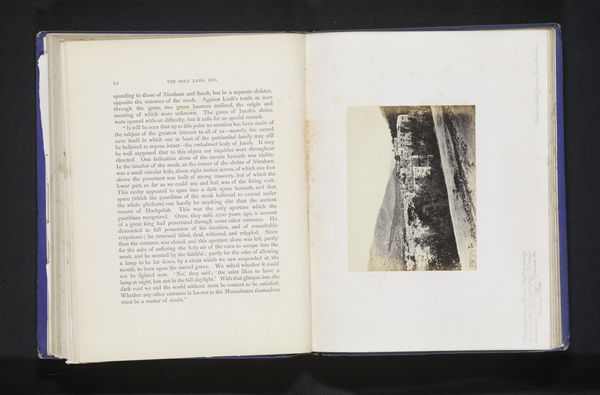
Gezicht op een rotswoning, Kodak House, in Mesa Verde National Park before 1893
0:00
0:00
print, photography, collotype, architecture
# print
#
landscape
#
photography
#
collotype
#
architecture
Dimensions: height 187 mm, width 240 mm
Copyright: Rijks Museum: Open Domain
Curator: My goodness, what a feat of engineering and design harmonizing so effortlessly with nature. Editor: You took the words right out of my mouth. There’s a stoic beauty here—those shadows, the rough texture of the rock…it speaks of resilience and an almost monastic contemplation. Curator: It truly does. We are looking at “Gezicht op een rotswoning, Kodak House, in Mesa Verde National Park.” It is attributed to Gustaf Nordenskiöld, dating back to before 1893. Nordenskiöld captured this breathtaking view using a collotype print technique, giving it this unique tonal range and velvety texture. Editor: Collotype...It has this ephemeral feel despite being, at its core, an image of permanence. But why “Kodak House?” That feels…jarring. Curator: Quite right, at first, it sounds a bit out of place, doesn't it? Well, it appears that’s a colloquial title. Probably labeled for accessibility by travelers making it much more Google-able, so to speak. Nordenskiöld’s aim, as a Swedish scientist and explorer, was documenting cliff dwellings that date back centuries. The house, of course, cut into the rock, acts as a physical manifestation of cultural memory—a space carved by generations of the Ancestral Puebloans, and it makes you reflect on survival and adaptability. The dwelling mirrors its inhabitants’ tenacity. Editor: I hadn't considered that aspect. There is an undeniable spiritual significance—those carved spaces mimic natural formations, reinforcing the relationship between humans and the earth. This cultural synthesis, however, raises certain ethical questions, right? Nordenskiöld, as an outsider, arrived in a land already inhabited. As an outsider, he made decisions about documenting their dwellings, that is complicated, no? Curator: It certainly invites those questions. Nordenskiöld's account does create an early form of accessibility, as an anthropological artifact to the structures and the Ancestral Puebloan society that made Mesa Verde their home. This collotype print sparks conversations that continue to resonate today, don’t you think? Editor: Absolutely. It makes us think about perspective, preservation, and the stories we choose to tell—and how. Curator: Precisely. Art serving as more than just a moment captured, instead offering complex insight into who we were, who we are, and who we aspire to be.
Comments
No comments
Be the first to comment and join the conversation on the ultimate creative platform.
